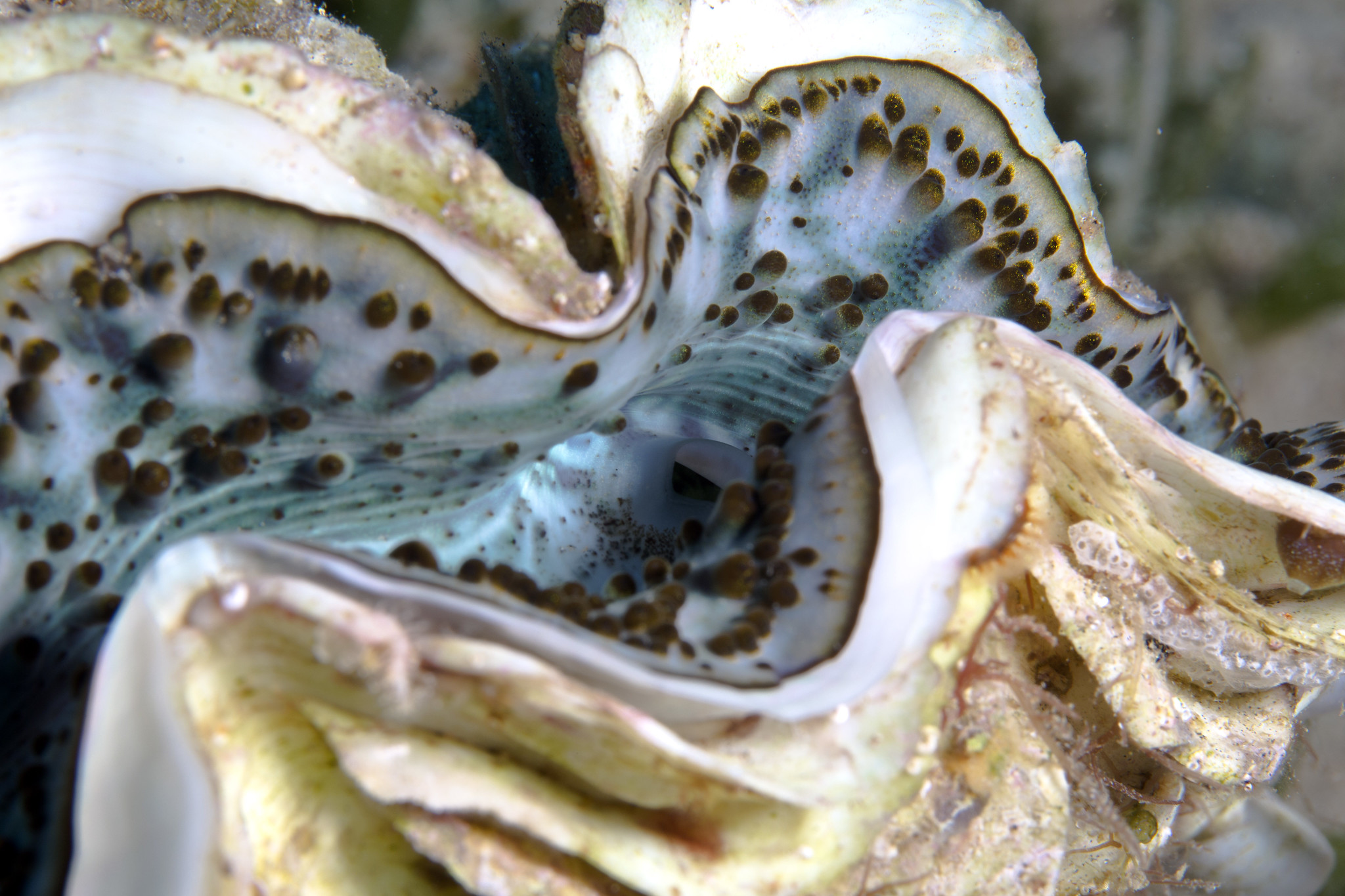Excerpt:
Giant clams suffer similar struggles with warming water, though the consequences don’t seem quite as dire.
Bleaching occurs when a stressed marine creature, most commonly a coral, expels its symbiotic algae and turns a ghostly white, often in response to a warming sea. But bleaching affects more than just corals. Giant clams—massive mollusks that can grow more than 1.2 meters in diameter and weigh as much as 225 kilograms—can bleach, too. And in recent research, scientists have learned more about how bleaching disrupts these sessile giants, affecting everything from their nutrition to their reproduction.
Giant clams live on coral reefs and are the largest bivalves on Earth. Like corals, giant clams bleach when they’re stressed, often as a response to excessively warm water. As with a coral, a bleached giant clam expels the algae, called zooxanthellae, that live inside it. These algae dwell in the soft tissue of the clam’s mantle and provide energy for the animal through photosynthesis, leaving a bleached clam with less energy and nutrients. At worst, bleaching can kill giant clams through food deficiency.
Scientists have been studying bleaching in giant clams for decades. In 1997 and 1998, during a brief period that saw extensive coral bleaching worldwide with corals succumbing in at least 32 disparate countries, bleached giant clams were observed from Australia’s Great Barrier Reef to French Polynesia after water temperatures in the South Pacific rose significantly. In 2010, similar temperatures in the water off Thailand’s Ko Man Nai Island also led to scores of deaths.
Of the 12 species of giant clams, some are more resistant to heat stress than others. But as scientists are finding, even when a giant clam survives bleaching, other physiological functions can still be severely impaired.
A recent study in the Philippines of wild clams, for example, found that bleaching can hamper their reproduction. Bleaching reduces the number of eggs giant clams produce, and the more severe the bleaching, the fewer eggs they make. Reproducing “takes a lot of energy. So instead of using that energy for reproduction, they just use it for their survival,” says Sherry Lyn Sayco, the lead author of the study and a graduate student at the University of the Ryukyus in Japan…









